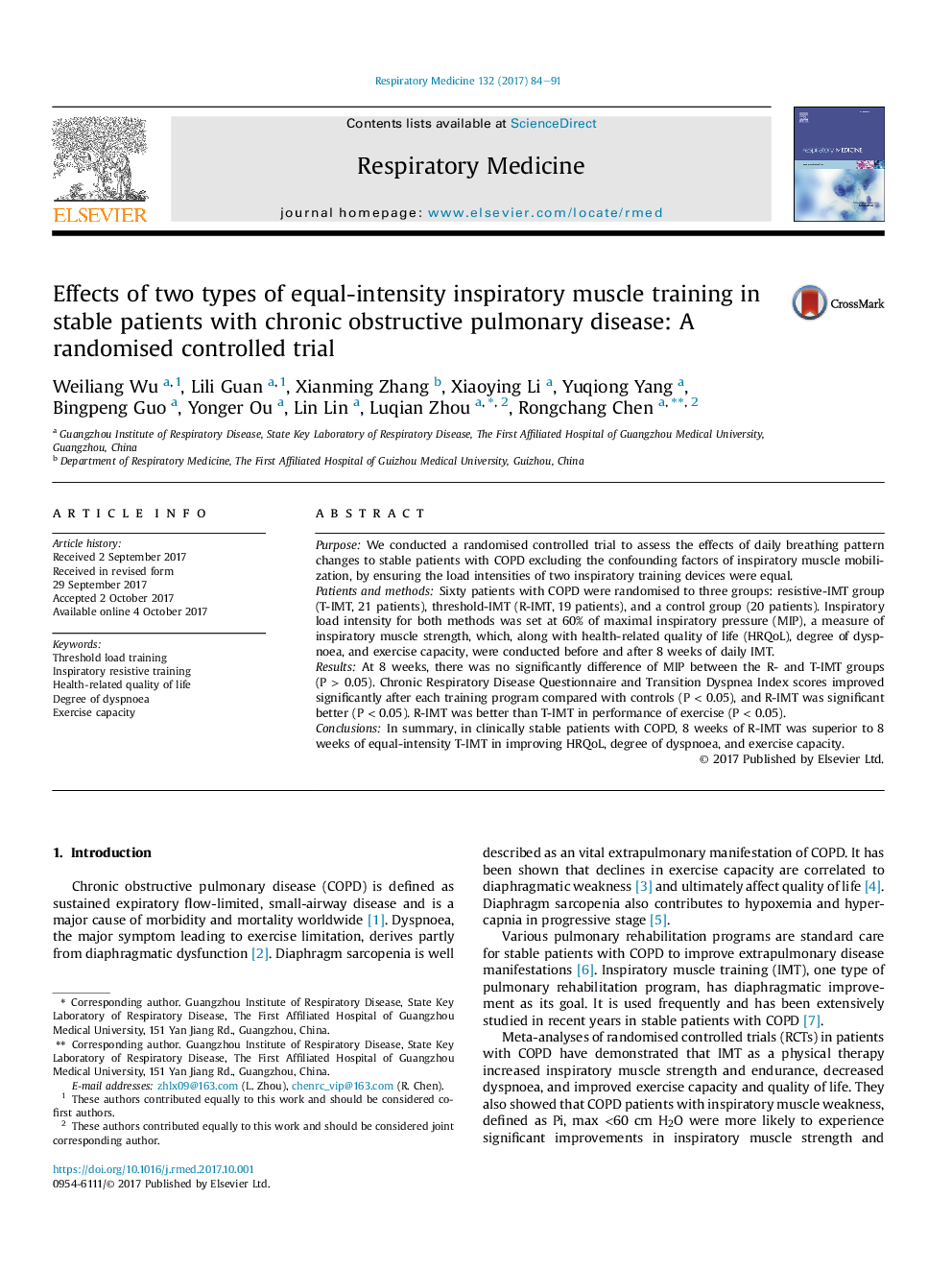| Article ID | Journal | Published Year | Pages | File Type |
|---|---|---|---|---|
| 5724800 | Respiratory Medicine | 2017 | 8 Pages |
â¢Threshold inspiratory muscle training (IMT) and resistive IMT showed a therapeutic effect in stable COPD patients.â¢R-IMT was superior to T-IMT in clinical effects in these type of patients.â¢The improvement of exercise capacity may result from the changes of inspiratory muscle strength and breathing pattern.
PurposeWe conducted a randomised controlled trial to assess the effects of daily breathing pattern changes to stable patients with COPD excluding the confounding factors of inspiratory muscle mobilization, by ensuring the load intensities of two inspiratory training devices were equal.Patients and methodsSixty patients with COPD were randomised to three groups: resistive-IMT group (T-IMT, 21 patients), threshold-IMT (R-IMT, 19 patients), and a control group (20 patients). Inspiratory load intensity for both methods was set at 60% of maximal inspiratory pressure (MIP), a measure of inspiratory muscle strength, which, along with health-related quality of life (HRQoL), degree of dyspnoea, and exercise capacity, were conducted before and after 8 weeks of daily IMT.ResultsAt 8 weeks, there was no significantly difference of MIP between the R- and T-IMT groups (PÂ >Â 0.05). Chronic Respiratory Disease Questionnaire and Transition Dyspnea Index scores improved significantly after each training program compared with controls (PÂ <Â 0.05), and R-IMT was significant better (PÂ <Â 0.05). R-IMT was better than T-IMT in performance of exercise (PÂ <Â 0.05).ConclusionsIn summary, in clinically stable patients with COPD, 8 weeks of R-IMT was superior to 8 weeks of equal-intensity T-IMT in improving HRQoL, degree of dyspnoea, and exercise capacity.
